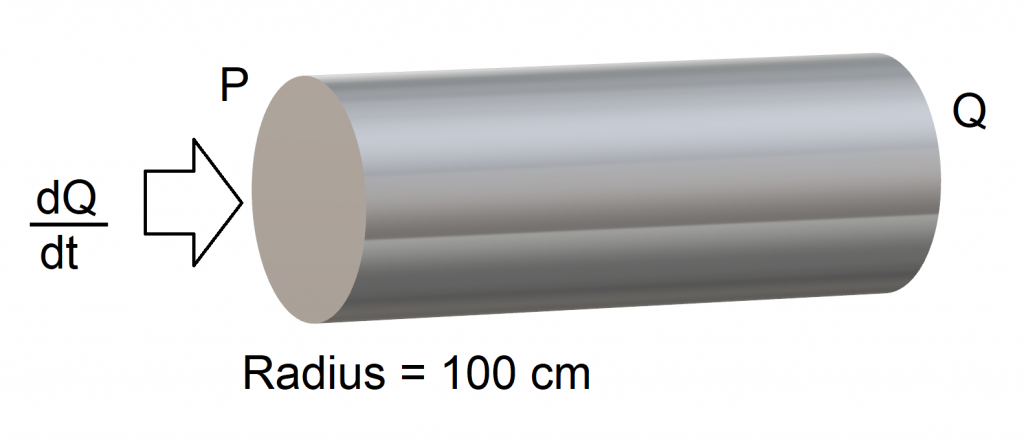03. A cylindrical rod has a temperature gradient of -0,5 K m-1 . The rate of heat flow in to P is 50 J s-1 .

Assuming that heat cannot escape through the curved surface of the solid but only through its cross section, calculate the thermal conductivity of the rod.
Area of cross section,
Quick Note !
The rate of heat flow perpendicular to the cross-sectional area A depends on :
It is found that
Therefore
Where k = thermal conductivity of material.
Therefore, thermal conductivity k is defined as the negative rate of heat flow per unit area perpendicular to the flow per unit temperature gradient. Metals, being good conductors, have higher value of k compare to non-metals. For same metals, k decreases slightly as the temperature increases. However, the decrease is mostly negligible.
Solution